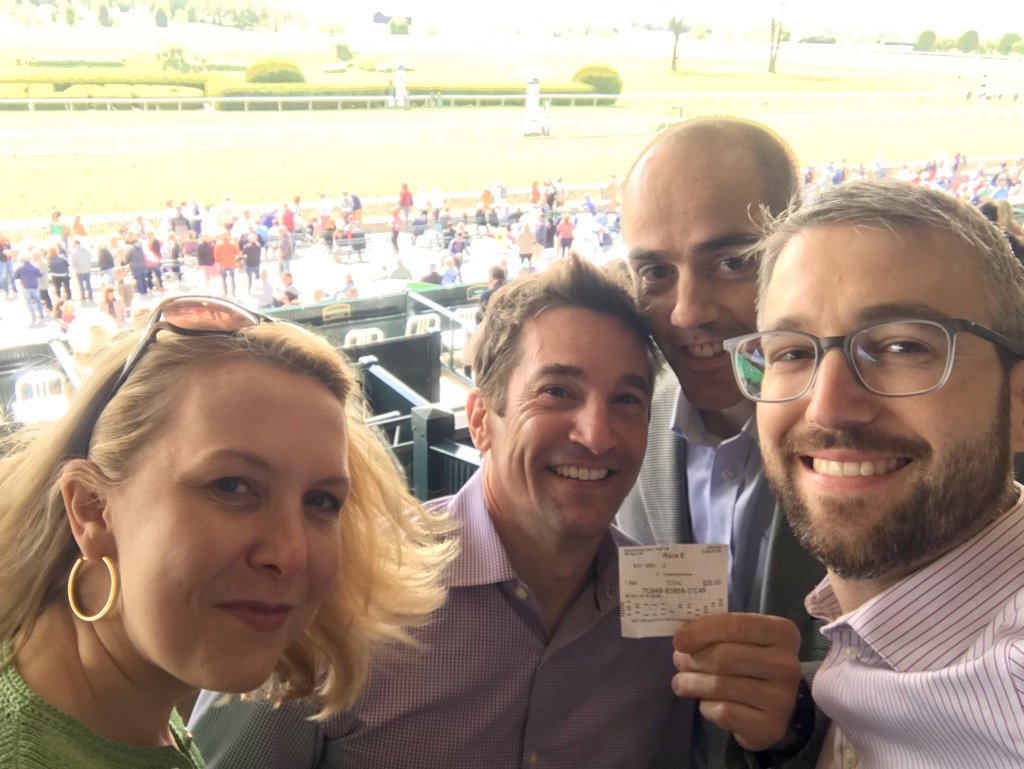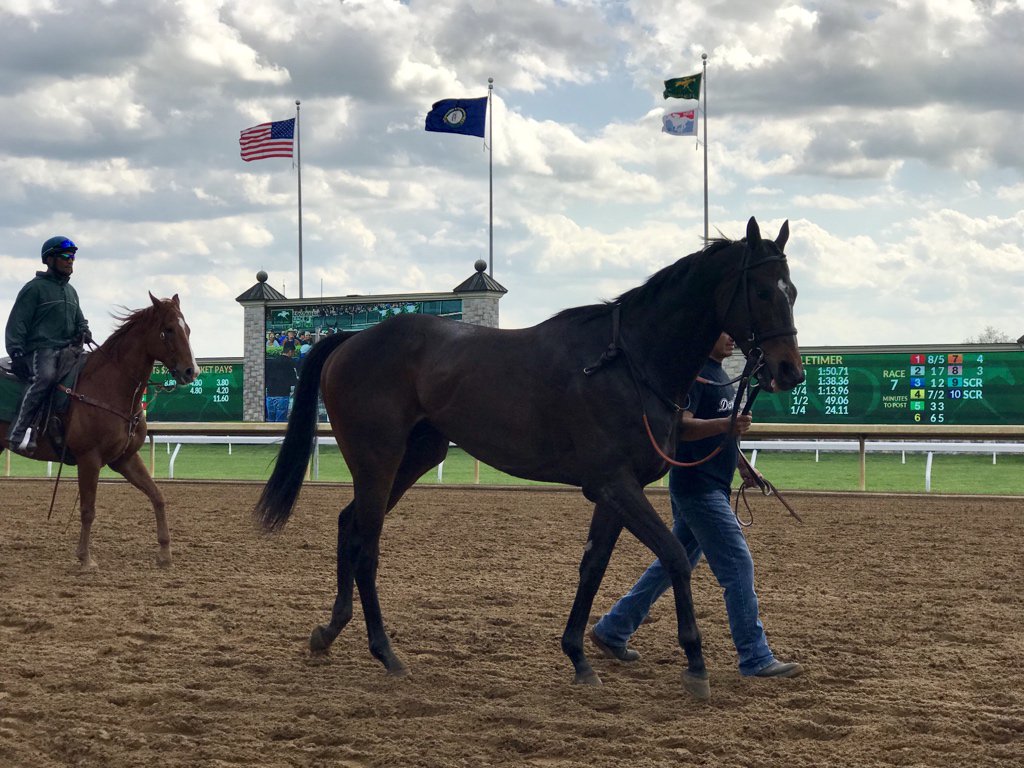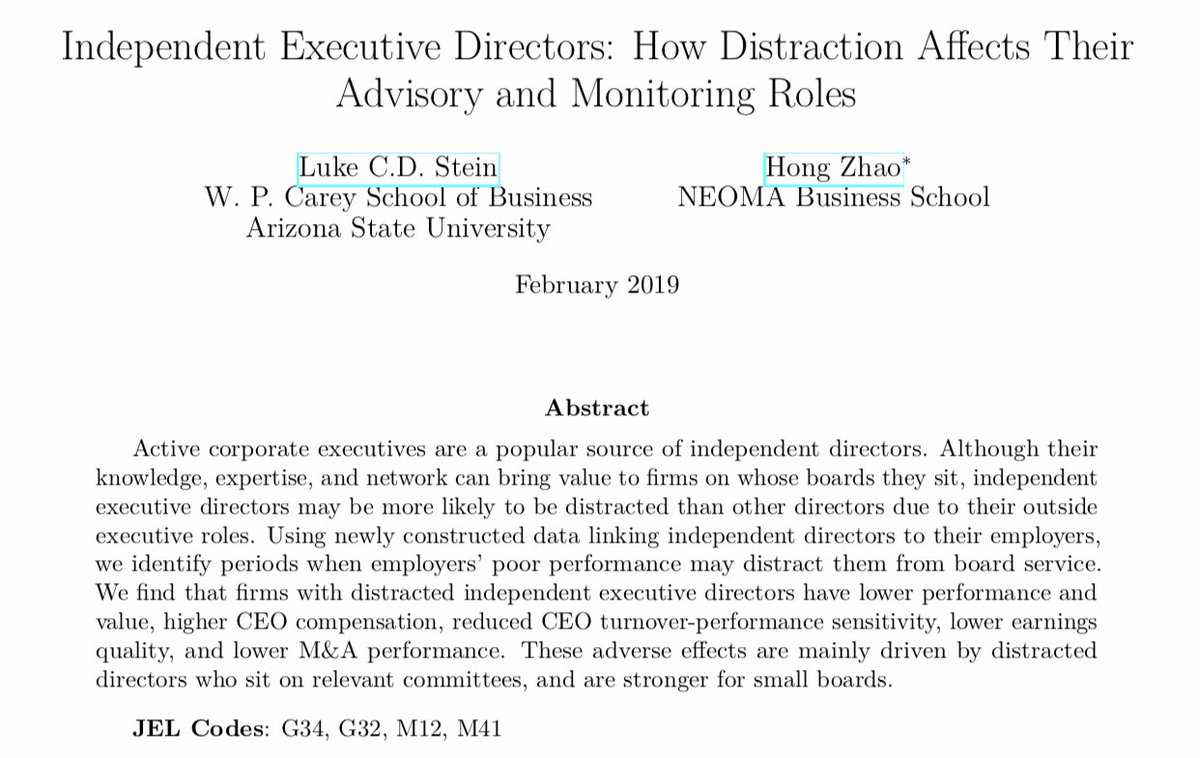Thread warning; mute if boring.
uky.edu/financeconfere… #KentuckyFin2019

1. (Low-frequency) consumption growth covaries with profit margins
2. There are more price wars when growth is low
3. Growth predicts profit margins particularly for low-innovation capacity industries
#KentuckyFin2019
Marginal investor has to pay borrowing rate > risk-free rate to take on leverage. Old story, but analyze with new, good data. #KentuckyFin2019

VERY COOL: Estimate leverage cost by regressing fund returns on benchmark returns. #KentuckyFin2019


- Role of frames in decision making
- [In]stability of choice under uncertainty
#KentuckyFin2019
[See you after lunch] #KentuckyFin2019
Really excited to instead learn from @steve_kempton about the investment properties of thoroughbreds 🐎📈 kemptonbloodstock.com #KentuckyFin2019
Very different cash flow patterns and risks for males vs female horses.
#KentuckyFin2019
Intermediation: Consigner (cf investment bank) takes 5% of sale price—sometimes negotiated. Track takes ~18% of money gambled. #KentuckyFin2019
Asks: Do peers learn from rivals' disclosures, and are copycats naive or sophisticated? #KentuckyFin2019

#KentuckyFin2019
Asks how removing price discrim affects credit supply (using govt disaster loans) #KentuckyFin2019

Find: Fixed-price SBA loans particularly likely to be denied in locations with high minority share, subprime share, or income inequality. But ex post defaults give NO evidence for taste-based discrimination. #KentuckyFin2019
“Price discrimination without prices leads to discrimination” #KentuckyFin2019



Asks: What is the incidence of UI and what are its corporate finance effects? #KentuckyFin2019
-Employment
-Wages
-Value
particularly of risky firms. Also, entrepreneurship! #KentuckyFin2019
- Incidence of unemployment insurance
- Fixed income returns
- Banking crises*
- Wealth and houshold debt
- Financial inclusion*
- Gold and corporate bonds*
*Historical questions/data
Some bonds don't trade for weeks, but mutual funds still have to provide liquidity. Wind up with lots of 0% returns. #KentuckyFin2019

- Treasury on the run (i.e., newly issued)
- Treasury off the run
- Investment-grade corporate
- NonIG corporate
- Distressed
- Municipal
How do you quote prices? #KentuckyFin2019

Evidence consistent with investors exploiting stale pricing (flow-underpricing sensitivity higher for high-ZRD funds); loads can mitigate this somewhat
Increased risk of fund runs #KentuckyFin2019
Uses large bank equity declines to identify crises in 46 countries 1870-2016
- Prospective not retrospective
- Objective
- Quantitative
#KentuckyFin2019



Bank equity declines precede nonfinancial equity declines and large credit spread increases later, but in older crises, more nonfinancial declines came first. #KentuckyFin2019



How does wealth affect debt? Experian credit profiles matched to 400k HH receiving $15B in oil/gas royalties. #KentuckyFin2019

DiD effects of wealth shock vary with credit score
- Subprime: ↓ revolving and mortgage balances
- Prime: ↑ revolving, auto, and mortgage balances
Effects level off at ~$50K wealth shock #KentuckyFin2019

ssrn.com/abstract=33029…
Excited for discussion from Jordan Nickerson @BCCarrollSchool #KentuckyFin2019

Considers a channel for gold standard→corporate investment during Great Depresn recovery #KentuckyFin2019

Implications for interplay between exchange rate uncertainty, nominal debt, and deflation risk #KentuckyFin2019

Thanks so much to our @UKGattonCollege hosts! #KentuckyFin2019

















